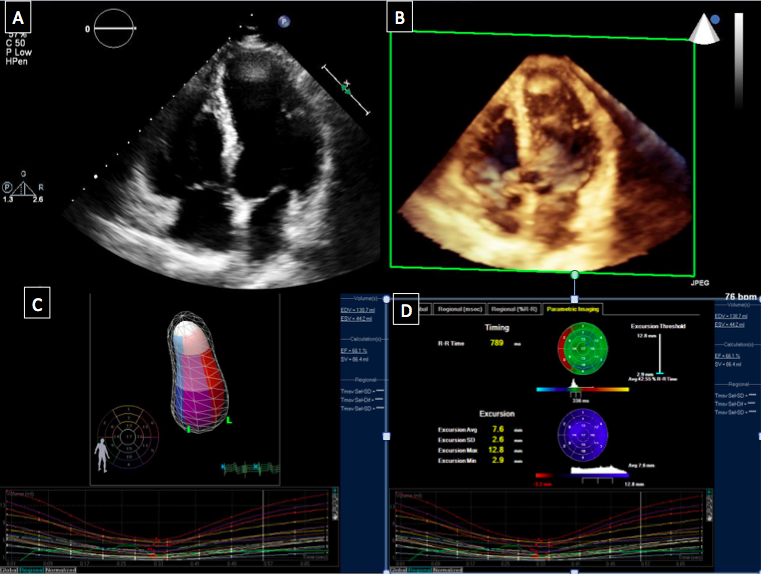[1]
Guglielmo M,Baggiano A,Muscogiuri G,Fusini L,Andreini D,Mushtaq S,Conte E,Annoni A,Formenti A,Mancini EM,Gripari P,Guaricci AI,Rabbat MG,Pepi M,Pontone G, Multimodality imaging of left atrium in patients with atrial fibrillation. Journal of cardiovascular computed tomography. 2019 Mar 30;
[PubMed PMID: 30952613]
[2]
Williams MC,Newby DE,Nicol ED, Coronary atherosclerosis imaging by CT to improve clinical outcomes. Journal of cardiovascular computed tomography. 2019 Mar 29;
[PubMed PMID: 30952611]
Level 2 (mid-level) evidence
[3]
Antoniades C,Kotanidis CP,Berman DS, State-of-the-art review article. Atherosclerosis affecting fat: What can we learn by imaging perivascular adipose tissue? Journal of cardiovascular computed tomography. 2019 Mar 29;
[PubMed PMID: 30952610]
[4]
Singh M,Sporn ZA,Schaff HV,Pellikka PA, ACC/AHA Versus ESC Guidelines on Prosthetic Heart Valve Management: JACC Guideline Comparison. Journal of the American College of Cardiology. 2019 Apr 9;
[PubMed PMID: 30947924]
[5]
Pettemerides V,Turner TJ,Steele C,Macnab A, Does stress echocardiography still have a role in the rapid access chest pain clinic post NICE CG95? Echo research and practice. 2019 Mar 1;
[PubMed PMID: 30893640]
[6]
Calogero E,Fabiani I,Pugliese NR,Santini V,Ghiadoni L,Di Stefano R,Galetta F,Sartucci F,Penno G,Berchiolli R,Ferrari M,Cioni D,Napoli V,De Caterina R,Di Bello V,Caramella D, Three-Dimensional Echographic Evaluation of Carotid Artery Disease. Journal of cardiovascular echography. 2018 Oct-Dec;
[PubMed PMID: 30746325]
[8]
Yannopoulos D,Bartos JA,Aufderheide TP,Callaway CW,Deo R,Garcia S,Halperin HR,Kern KB,Kudenchuk PJ,Neumar RW,Raveendran G, The Evolving Role of the Cardiac Catheterization Laboratory in the Management of Patients With Out-of-Hospital Cardiac Arrest: A Scientific Statement From the American Heart Association. Circulation. 2019 Mar 19;
[PubMed PMID: 30760026]
[9]
Wu J,Liu C, Recent advances in cardiac SPECT instrumentation and imaging methods. Physics in medicine and biology. 2019 Mar 13;
[PubMed PMID: 30726779]
Level 3 (low-level) evidence
[10]
Bhatia S,Anstine C,Jaffe AS,Gersh BJ,Chandrasekaran K,Foley TA,Hodge D,Anavekar NS, Cardiac magnetic resonance in patients with elevated troponin and normal coronary angiography. Heart (British Cardiac Society). 2019 Apr 4;
[PubMed PMID: 30948519]
[11]
Misra A,Sriram C,Gupta P,Humes R, The Adult with Post-operative Congenital Heart Disease: a Systematic Echocardiographic Approach. Current cardiology reports. 2019 Mar 18;
[PubMed PMID: 30887232]
Level 1 (high-level) evidence
[12]
Zoghbi WA,Asch FM,Bruce C,Gillam LD,Grayburn PA,Hahn RT,Inglessis I,Islam AM,Lerakis S,Little SH,Siegel RJ,Skubas N,Slesnick TC,Stewart WJ,Thavendiranathan P,Weissman NJ,Yasukochi S,Zimmerman KG, Guidelines for the Evaluation of Valvular Regurgitation After Percutaneous Valve Repair or Replacement: A Report from the American Society of Echocardiography Developed in Collaboration with the Society for Cardiovascular Angiography and Interventions, Japanese Society of Echocardiography, and Society for Cardiovascular Magnetic Resonance. Journal of the American Society of Echocardiography : official publication of the American Society of Echocardiography. 2019 Feb 20;
[PubMed PMID: 30797660]
[13]
Gill EA,Blaha MJ,Guyton JR, JCL roundtable: Coronary artery calcium scoring and other vascular imaging for risk assessment. Journal of clinical lipidology. 2019 Jan - Feb;
[PubMed PMID: 30773212]

